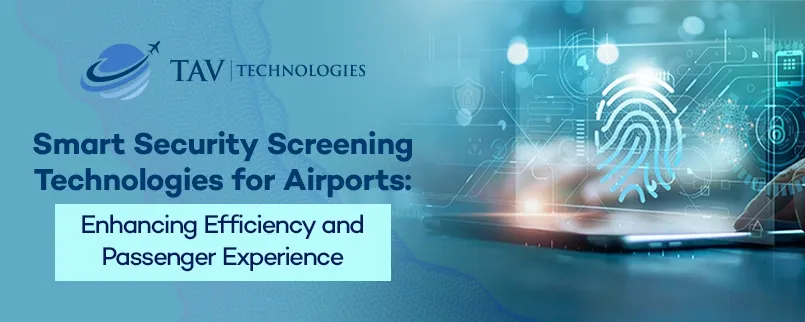
Oct 2024
Modern airports are rapidly adapting to meet the growing needs of travelers and maintain high security standards. A significant innovation in this area is the implementation of smart security screening technologies, which improve both the security measures and the overall passenger experience.. In this context, a key area of innovation is smart security screening technologies, which aim to facilitate the security process while increasing passenger satisfaction. In this blog, we will explore how these technologies not only meet the highest security standards but also improve the overall airport experience.
The Need for Smart Security Solutions
Security is a top priority for airports, but traditional screening methods can often lead to long wait times, passenger frustration, and operational inefficiencies. As passenger traffic continues to grow, especially in major hubs, the need for more efficient and effective security screening processes becomes increasingly critical.
Smart security screening technologies address these challenges by integrating advanced systems such as artificial intelligence (AI), biometrics, and automated screening lanes. These technologies not only enhance the accuracy and speed of security checks but also minimize the inconvenience to passengers.
To address these pressing challenges, airports are adopting innovative technologies that revolutionize the security process.
Key Technologies in Smart Security Screening
Biometric Authentication: By utilizing facial recognition or fingerprint scanning, biometric authentication enables a seamless and secure identification process. Passengers can move through security checkpoints with minimal physical interaction, reducing the likelihood of errors and delays.
AI-Powered Threat Detection: Advanced AI algorithms can analyze security scans in real-time, identifying potential threats more accurately than traditional methods. This technology helps in reducing false alarms and speeds up the decision-making process, allowing security personnel to focus on high-risk cases.
Automated Screening Lanes (ASLs): These lanes are designed to handle multiple passengers simultaneously, significantly reducing wait times. ASLs are equipped with advanced imaging technology that can detect prohibited items more efficiently, making the screening process faster and less intrusive.
Remote Screening: Remote screening allows security personnel to monitor and analyze screening data from a central location. This approach not only optimizes resource allocation but also enables quicker response times in case of a security breach.
Smart Baggage Screening Systems: Integrated systems that combine AI, CT scans, and big data analytics to monitor and analyze baggage screening in real-time. Computed Tomography (CT) scanners provide a detailed image of baggage, enables passengers remove electronics and liquids and make the screening process quicker. AI-Powered X-Ray Scanning can automatically detect prohibited items or potential threats. These systems can flag unusual patterns and provide detailed threat assessments. With AI, CT and big data analytics, these systems can flag unusual patterns and provide detailed threat assessments.
Enhancing Passenger Experience
Although security is of greatest importance, the passenger experience is also crucial in airport operations. Advanced security screening technologies provide numerous advantages that enhance the travel experience, making it smoother and more pleasant.
Reduced Waiting Times: Faster processing through automated and AI-driven systems means shorter lines and less time spent at security checkpoints.
Minimal Disruption: With non-invasive technologies such as biometrics and advanced imaging, passengers can go through security without the need to remove shoes, belts, or jackets, making the process less stressful.
Personalized Experience: By leveraging passenger data, airports can offer a more personalized experience, such as tailored communication and services, which can enhance overall satisfaction.
The Future of Airport Security
As technology continues to advance, the future of airport security looks promising. We can expect even greater integration of AI, machine learning, and data analytics to further enhance the efficiency and effectiveness of security screening processes.
